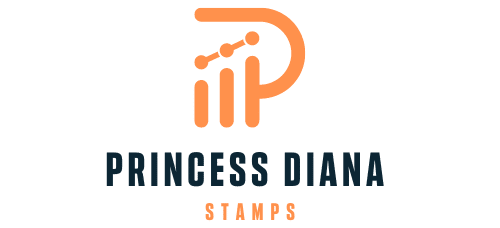What Strategies Can Improve the Adoption of Healthy Behaviors in Populations with Low Health Literacy?

In the realm of public health, health literacy is a critical factor in determining the efficacy of interventions and strategies targeted at improving the health status of individuals and communities. However, achieving the desired impact becomes challenging when dealing with populations with low health literacy. The question then is, what strategies can improve the adoption of healthy behaviors in such populations?
Understanding the challenge: Low Health Literacy
The concept of health literacy goes beyond the ability to read and write. It entails the proficiency to understand, process, and utilize health information for appropriate decision-making. Low health literacy, therefore, implies a limited capability to comprehend health-related information, which subsequently affects patients’ health behaviors and outcomes.
Avez-vous vu cela : What Are the Health Benefits of Participating in Community Drumming Circles?
Studies, including those indexed in Pubmed and Google Scholar, have established a strong correlation between low health literacy and poor health outcomes. In a study by Bostock and Steptoe (2012), patients with low health literacy were found to have a higher likelihood of hospitalization, increased rates of emergency care, less frequent use of preventive services, and overall poorer health status.
Consequently, low health literacy can lead to adverse health behaviors such as poor diet, lack of physical activity, and non-adherence to medication, which can culminate in chronic diseases. Thus, it is crucial to develop strategies that can improve the adoption of healthy behaviors among this demographic.
A lire également : What Dietary Adjustments Are Recommended for Managing Hypothyroidism?
Leveraging Technology-based Interventions
In this digital age, technology-based interventions have become an effective tool in promoting health literacy and improving health outcomes. These interventions could be in the form of mobile applications, telemedicine, and interactive websites, among others.
A Google-commissioned study highlighted the effectiveness of digital health interventions in influencing health behaviors. The study found that digital interventions that offered personalized feedback, goal-setting functions, and interactive features resulted in significant improvements in physical activity, dietary habits, and medication adherence.
When targeting populations with low health literacy, these technology-based interventions should be designed with simplicity and user-friendliness in mind. This way, they can be easily understood and used by the intended audiences, thereby fostering the adoption of healthy behaviors.
Patient education and Communication
Patient education is a significant aspect of healthcare delivery. It empowers patients with the knowledge necessary to make informed decisions regarding their health. Thus, patient education is a vital strategy in improving the adoption of healthy behaviors in populations with low health literacy.
Healthcare providers must adopt communication strategies suited to the literacy level of their patients. For instance, using simple language, avoiding medical jargon, and using visual aids can aid understanding. There’s also the “teach-back” technique, where the patient is asked to repeat the information in their own words to confirm comprehension.
These communication strategies foster better understanding, improve patient-provider relationships and thereby enhance the adoption of healthy behaviors.
Community-based Interventions
Community-based interventions involving family members, peers, and community health workers have proven effective in promoting healthy behaviors among populations with low health literacy. This approach leverages the power of social influence and community engagement in effecting behavioral change.
For instance, a Crossref-indexed article highlighted a study where a community-based intervention involving group education sessions and home visits by community health workers led to improved antenatal care attendance and birth preparedness among women with low health literacy in rural Uganda.
Such community-based interventions could be adapted to different contexts and health issues to improve health behaviors among populations with low health literacy.
Policy and Advocacy
Finally, policies play a critical role in shaping health behaviors. Advocacy for policies that promote health literacy and healthy behaviors is therefore essential. Such policies could include regulations on food labelling, health education in schools and communities, and funding for health promotion campaigns targeted at populations with low health literacy.
Furthermore, the integration of health literacy into national health policies can help to mainstream health literacy into all aspects of health care and promote healthy behaviors at the population level.
In summary, improving the adoption of healthy behaviors in populations with low health literacy poses a significant public health challenge. However, the adoption of technology-based interventions, patient education and communication strategies, community-based interventions, and policy advocacy can help overcome this hurdle. It is important to remember that these strategies should be tailored to the specific needs and contexts of the target populations for maximum impact.
Implementing Culturally Sensitive Interventions
Incorporating cultural aspects into health education and interventions can significantly enhance the effectiveness of strategies aimed at improving health behaviors in populations with low health literacy. Culturally sensitive interventions consider the unique customs, beliefs, and practices of the target population, thereby increasing the likelihood of acceptance and adherence.
Pubmed and Google Scholar have published numerous research papers that substantiate the efficacy of culturally sensitive interventions. For example, a PubMed article highlighted a study where Latino parents with low health literacy demonstrated improved pediatric asthma management after participating in a culturally tailored education program.
Healthcare providers need to be educated on the cultural backgrounds and health beliefs of their patients. This knowledge enables them to tailor health education and care plans that resonate with the cultural norms and values of their patients, thereby improving health behaviors.
Moreover, integrating cultural health mediators, such as community health workers or patient navigators who share the same cultural background with the patients, can help bridge the cultural and linguistic gaps. These mediators can facilitate communication, provide culturally appropriate health education, and support patients in navigating the complex healthcare system.
Tailoring Health Messages
The manner in which health messages are conveyed has a significant impact on the recipients’ understanding and subsequent behavior. Therefore, tailoring health messages to fit the literacy levels, cultural contexts, and individual needs of the target audience can improve the adoption of healthy behaviors in populations with low health literacy.
This strategy involves simplifying complex health information into understandable and relatable messages. For instance, using visual aids, such as pictures and graphics, can help illustrate health concepts more clearly than words alone. Likewise, utilizing storytelling or narratives can help convey health messages more effectively as they tap into the emotional and experiential aspects of learning.
Furthermore, the use of multiple communication channels, such as print, broadcast, digital media, and interpersonal communications, can enhance the reach and absorption of health messages. A multi-channel approach ensures that health messages are accessible to everyone, regardless of their literacy level or access to technology.
Conclusion
The challenge of improving health behaviors in populations with low health literacy requires a multi-faceted approach. Adopting strategies such as leveraging technology-based interventions, enhancing patient education and communication, implementing community-based and culturally sensitive interventions, tailoring health messages, and advocating for supportive policies can yield significant results.
However, there is no one-size-fits-all solution. The strategies need to be flexible and adaptable to the specific needs and contexts of the target populations. It is also crucial to engage the target populations in the planning and implementation of interventions to ensure their relevance and acceptance.
Ultimately, improving health behaviors in populations with low health literacy is not just about imparting knowledge. It is about empowering individuals and communities with the tools and skills necessary for them to take proactive roles in their health care. Achieving this will contribute to a healthier society and a more efficient and equitable health care system.
